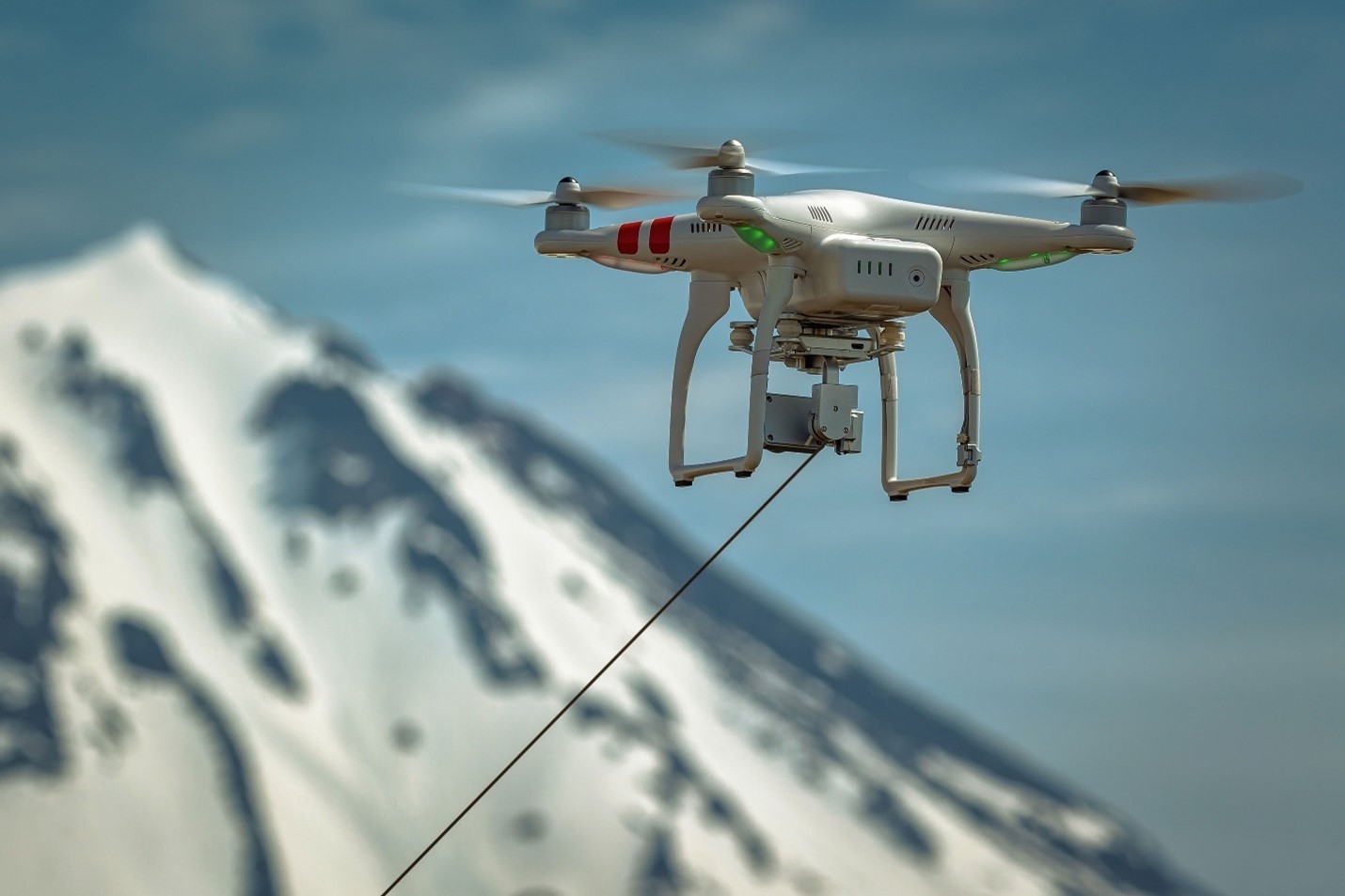What Are Tethered Drones? An Introduction to Their Functionality and Uses
Drones have become an integral part of modern technology, revolutionizing industries from photography to defense. While most drones operate freely in the air, tethered drones offer a unique approach to aerial operations by remaining connected to a ground station via a physical cable. This connection provides several advantages, making them ideal for specific applications. In this article, we will explore what tethered drones are, how they function, and their diverse uses across different industries.
Understanding
Tethered Drones
Tethered
drones are unmanned aerial vehicles (UAVs) that remain physically connected to
a ground-based power source via a cable or tether. Unlike traditional drones
that rely on limited onboard batteries, tethered drones can operate
continuously without the need for frequent recharging. The tether serves
multiple purposes, including power transmission, data transfer, and enhanced
stability.
Key
Components of a Tethered Drone System
A
tethered drone system consists of the drone unit, which is the aerial vehicle
equipped with cameras, sensors, or other payloads. The tether cable is a
strong, lightweight cable that provides power and data connectivity. The ground
control station acts as the base unit that supplies power and processes
real-time data. Additionally, a winch system manages the tether’s length and
prevents entanglement.
How
Tethered Drones Work
Tethered
drones operate by drawing power from a continuous energy source on the ground.
This enables them to remain airborne for extended periods, often for hours or
even days. The tether also allows for real-time high-speed data transmission,
ensuring uninterrupted communication between the drone and its operators.
Additionally, the physical connection provides greater stability, reducing the
risk of signal interference or drone loss due to weak GPS signals.
Applications
of Tethered Drones
Tethered
drones are widely used for surveillance by military, law enforcement, and
security agencies. Their ability to provide persistent aerial monitoring makes
them invaluable for border security, large public events, and critical
infrastructure protection.
During
natural disasters or emergencies, tethered drones assist in search and rescue
operations by providing a continuous aerial view. They help first responders
assess damage, locate survivors, and coordinate relief efforts in real time.
Tethered
drones act as temporary aerial communication towers, enhancing network coverage
in remote areas or during large-scale events. They provide stable internet and
mobile connectivity in disaster-stricken regions where traditional
infrastructure is damaged.
Media
and entertainment industries utilize tethered drones for live event coverage.
Their ability to capture high-quality aerial footage without battery
limitations makes them ideal for broadcasting concerts, sports events, and
political rallies.
Researchers
deploy tethered drones to monitor wildlife, weather patterns, and pollution
levels. Their long-duration flight capability enables continuous data
collection in environmental studies.
Armed
forces use tethered drones for intelligence gathering, reconnaissance, and
target tracking. Their ability to stay airborne for extended periods makes them
a reliable asset for real-time battlefield awareness.
Advantages
of Tethered Drones
Tethered
drones have an extended flight time because, unlike battery-powered drones,
they can remain operational indefinitely. They provide reliable data
transmission, as the tether ensures secure, high-speed communication between
the drone and operators. The physical connection enhances stability, reducing
the impact of strong winds and GPS signal loss. Since they are physically
connected to the ground station, tethered drones have a lower risk of losing
control.
Limitations
of Tethered Drones
Despite
their advantages, tethered drones have some limitations. Their mobility is
restricted, making them unsuitable for dynamic or long-range operations. They
depend on ground infrastructure, requiring a reliable power source and base
station for continuous operation. The tether can also be a potential weak point
if cut or damaged in high-risk environments.
Conclusion
Tethered
drones bridge the gap between traditional UAVs and fixed surveillance systems
by offering long-duration flight capabilities, stable data transmission, and
enhanced security. Their applications in security, emergency response,
telecommunications, and scientific research demonstrate their versatility and
growing significance. As technology advances, we can expect further innovations
in tethered drone systems, making them even more efficient and adaptable for a
wide range of industries.
.png)






Leave a Comment
Your email address will not be published. Required fields are marked *